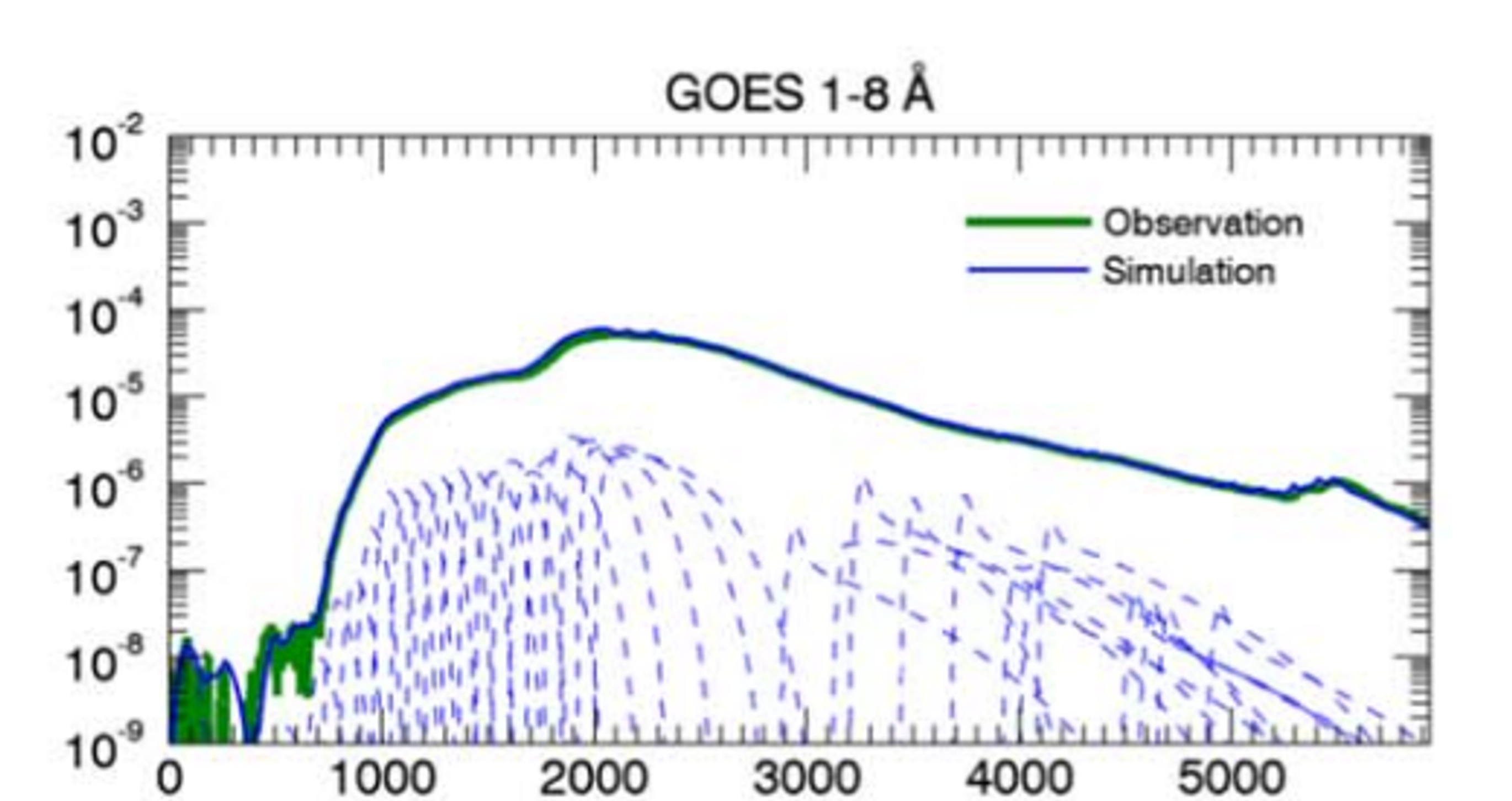
Simulating Solar Flare Irradiance with Multithreaded Models of Flare Arcades
First Author: Jeff Reep
Understanding how energy is released in flares is one of the central problems of solar and stellar astrophysics. Observations of high-temperature flare plasma hold many potential clues as to the nature of this energy release. It is clear, however, that flares are not composed of a few impulsively heated loops, but are the result of heating on many small-scale threads that are energized over time, making it difficult to compare observations and numerical simulations in detail. Several previous studies have shown that it is possible to reproduce some aspects of the observed emission by considering the flare as a sequence of independently heated loops, but these studies generally focus on small-scale features while ignoring the global features of the flare. In this paper, we develop a multithreaded model that encompasses the time-varying geometry and heating rate for a series of successively heated loops composing an arcade. To validate, we compare with spectral observations of five flares made with the MinXSS CubeSat, as well as light curves measured with GOES/XRS and SDO/AIA. We show that this model can successfully reproduce the light curves and quasi-periodic pulsations in GOES/XRS, the soft X-ray spectra seen with MinXSS, and the light curves in various AIA passbands. The AIA light curves are most consistent with long-duration heating, but elemental abundances cannot be constrained with the model. Finally, we show how this model can be used to extrapolate to spectra of extreme events that can predict irradiance across a wide wavelength range, including unobserved wavelengths.
